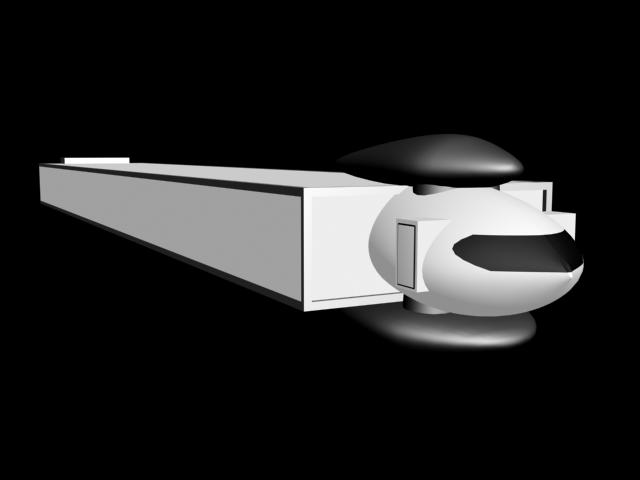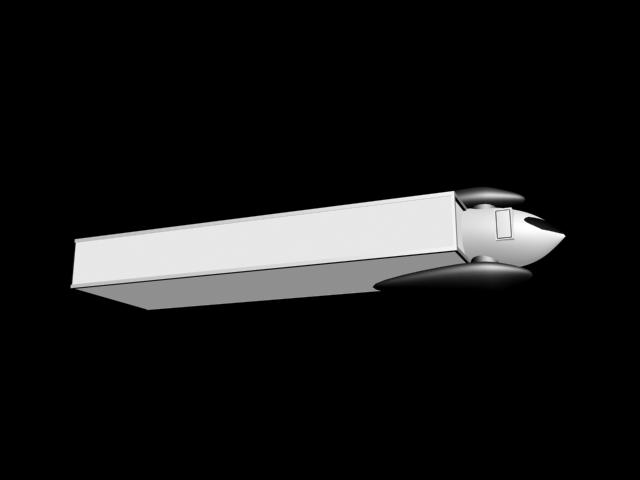Sidebar
Table of Contents
K series Light Freighter
The PHI K series Light Freighter provides a tailor-made solution for the shipping of industry-standard SSCC containers within a star system.

About the Ship
The K series comes in a number of variations, the by far most common of which are the DB and DD. Charmingly referred to within the industry as the 'B-cup' and 'D-cup' respectively, these two variants differ only in the number of containers they can carry - the 8-spot hold of the DB extended an additional ~30 meters to double its capacity to 16 containers. The interior comes in four different levels of luxury, ranging from the rather bland at 'J' to the more comfortable and pleasing 'Q' and the series-standard high 'K' level; the last interior package is completely customer dictated and comes complete with gold 'Custom' badging on the exterior.
Key Features
Moderate sized cargo area primarily designed to hold SSCC-XL containers.
Mission Specialization
General intra-system hauling of a limited numbers of SSCC-XL containers or - in rarer cases - other cargo types.
Appearance
Moderate sized rectangular cargo area with CCD pods mounted above and below at the joining of the cargo area and the rounded cabin.

History and Background
The K series Light Freighter was designed by Posedeia Heavy Industries to fit into the role of providing limited-range haulage of SSCC-XL containers within a system environment, a fairly typical scenario for civilian transportation intrests. It's really as simple as that; if stuff needs truckin', best make a truck.
Statistics and Performance
General
Class: Phi-YK-1a Type: Light Freighter Designers: Posedeia Heavy Industries Manufacturer: Posedeia Heavy Industries Production: xxxx Fielded by: Civilian sector
Passengers
Crew: One pilot and one co-pilot, though the co-pilot is not required and their position often left vacant. Maximum Capacity: There is seating for only two persons, though there is a bed behind the seats (operations manual requires this to be vacated while the freighter is in motion) and a small amount of room in the access passages.
Cargo
DB variant: 8 SSCC-XL containers (4 x 2 arrangement) DD variant: 16 SSCC-XL containers (4 x 4 arrangement)
While there exist some third-party kits that can be used to convert the cargo area to house smaller containers or even loose cargo, this results in wasted space and is possibly hazardous and is not recommended by the manufacturer. Press releases indicate that PHI may be looking into offering similar kits in the future if the market demands it.
Dimensions
Length:
- DB: 39.3 meters (129 feet)
- DD: 69.5 meters (228 feet)
Width: 11 meters (36.1 feet) Height: 8.1 meters (26.6 feet) Decks: 1
Propulsion and Range
Continuum Distortion Drive: 4,125c Sublight Engines: 0.150c Range: One week (recommended maximum) Lifespan: Roughly 20 years Refit Cycle: Routine service every 6 months, overhauls every 5 years
WARNING: While atmospheric flight and leaving a planet is possible, re-entry into an atmosphere is not do to lack of thermal shielding. Attempting to enter a planetary atmosphere will void all manufacturer warranties (and likely kill you).
Damage Capacity
- Hull: 5
Inside the Ship
Compartment Layouts
Cabin
The cabin is a simple affair; at its fore are two comfortable seats facing the controls and instrumentation panels with a wide storage surface between them. Immediately behind the seats and situated between two thin corridors on either side of the cabin is a small curtained area containing a simple bed for when other accommodation is not available. The two slightly angled corridors meet a slightly wider connecting corridor directly aft of the bed area and ends on either side of the cabin in small, simple airlocks. There are many storage areas situated around the cabin, some only small enough for a few documents while the largest can be used for hanging clothing or stowing packages etc.
Cargo Bay
Aft of the freighter's engine bay is the container cargo area, a nearly entirely empty area barring a few thin, evenly spaced structural support columns. On the floor there is a sunken roller system which is used to move containers around effortlessly via two central fore and aft rails and two (DB variant) or four (DD) sets of perpendicular rails for the outer container spaces. Once in position containers can be locked in place to ensure they do not move around in transit. Access is via a standard large-cargo-airlock sized opening at the aft, the sealable door of which retracts outwards and upwards before sliding forewards into a storage slot (note: this is not an airlock, and opening in space will result in decompression of the cargo area).
Loading Procedure
Once a K series has been reversed up to a suitable large cargo airlock and a pressurised seal has been created between then, the cargo door folds in half outwards and retracts upwards (going from completely flat, to a sideways 'v', to folded completely in half), before sliding completely into a purpose-made slot above the door for storage. Two sets of extend able rails slightly longer than an SSCC-XL then slide out from the floor of the cargo bay into the station upon which SSCC-XL to be loaded can be placed; once upon the rails locking tabs secure the container and it is then electrically rolled into the cargo bay. Once inside the loading is completely automated, with containers travelling along the rails as far as possible before stopping and then being moved laterally along the parallel rails into position (if not already occupied). Incomplete rows (three containers or less) are loaded so that unfilled positions are towards the outer of the cargo bay so as to aid in stability. Unloading is simply the reverse of loading, via the roller/rail system containers are brought outside the cargo bay where they can be taken away by dockside cargo handlers. The freighter's computer system keeps track of the owner and destination of each container on board so that only those required at a particular stop (during multiple leg trips) are brought out.
Ship Systems
Computers and Electronics
K series freighters are fitted with simple but reliable civilian-grade navigation systems, useful for little more than getting from A to B and listening to music while you are at it.
Emergency Systems
The aft wall of each airlock contains lockers for a Spacesuit, a small amount of survival rations and fire fighting equipment.
Life Support Systems
The life support system is rather simple, being of a limited recirculation type that is recharged while attached to a station or in a suitable atmosphere. There is enough air for 2 people to survive roughly 2 weeks.
Propulsion
Page Tools
Terms of Service - Privacy Policy
